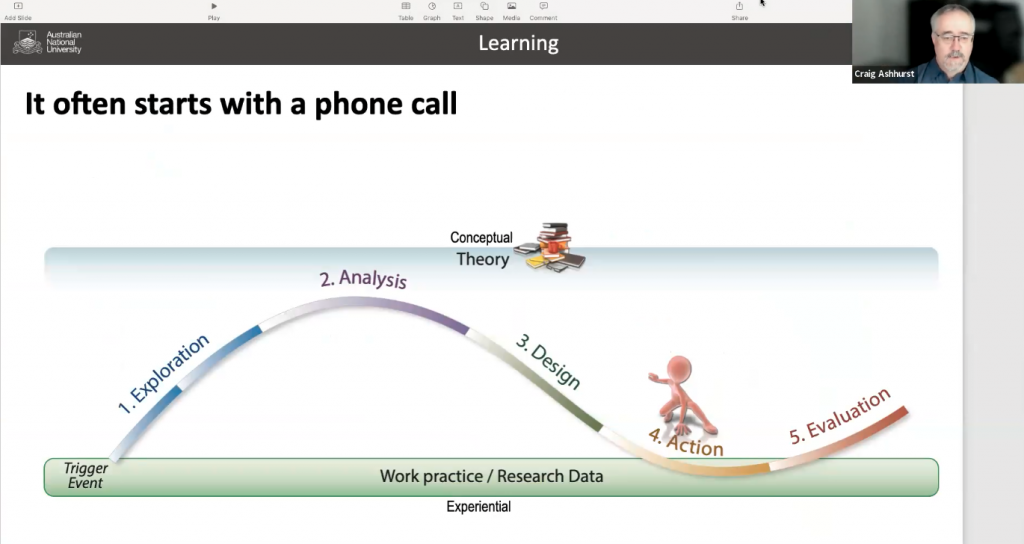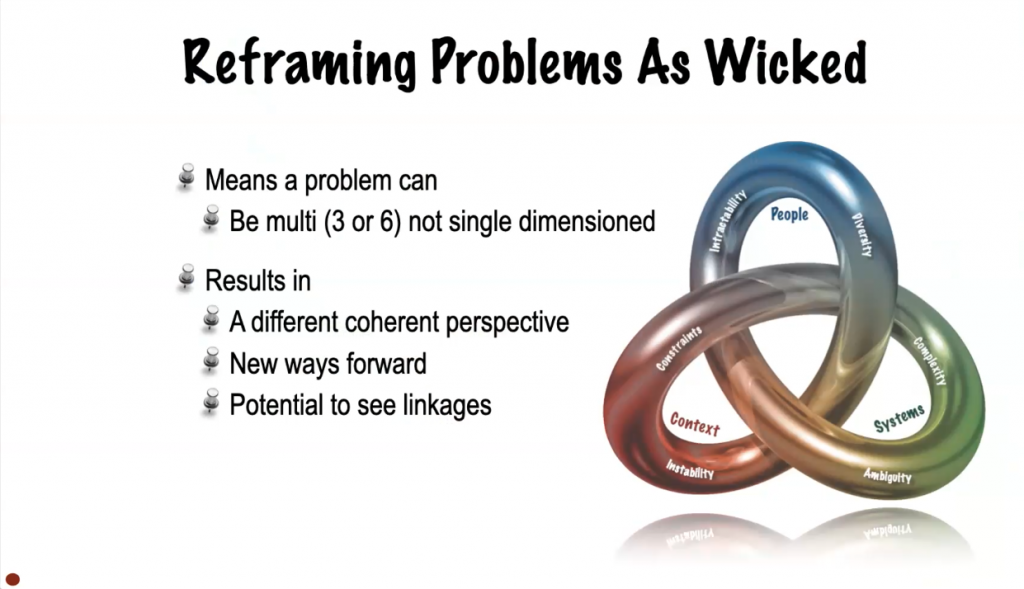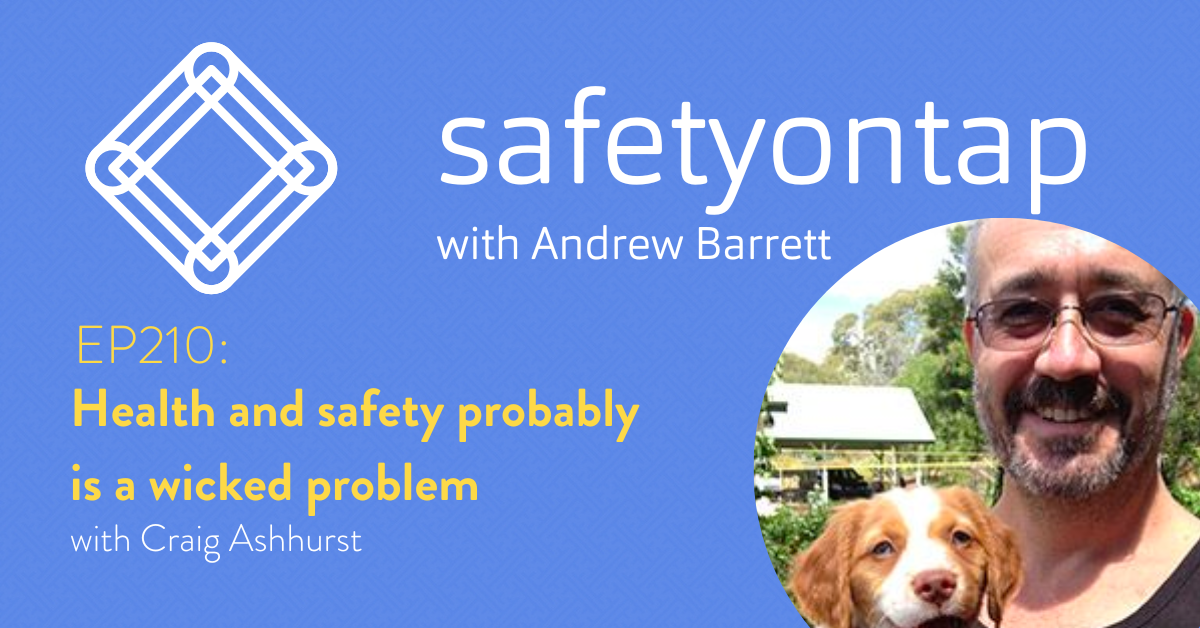I have some questions for you. As you hear these, just nod your head or shake it if you agree or disagree. Does it ever feel like you can’t give a good clear definition of what health and safety is? That the work is never ending? That it’s tricky to definitively describe what we are trying to do? That it’s difficult to predict what will happen? That we can’t make firm promises about our systems or controls or interventions? That what works in one context doesn’t seem to in others so we are always creating things anew? That interpretation and multiple perspectives in health and safety are both frustrating but seemingly inevitable?
Hey, it’s Andrew, and this is Safety on Tap.
Since you’re listening in, you must be a leader wanting to grow yourself and drastically improve health and safety along the way. Welcome to you, you’re in the right place. If this is your first time listening in, thanks for joining us and well done for trying something different to improve! And of course welcome back to all of you wonderful regular listeners.
I wouldn’t be bringing you this conversation today unless I was confident you’d be nodding to most of those questions I just asked. The logical rational way to solve those problems might be to get a clearer definition of health and safety, to do more research on what works, to standardise, to invest better metrics to measure….the list of things people are putting huge time and resources into are significant.
Well what if I suggested to you that a lot of it could be wasted effort? That maybe health and safety can’t be adequately defined? That it is necessarily reinvented in each context? That we cannot ever know the answer or even the problem until we throw something against the wall?
The questions I asked you come from the definition of wicked problems, which means that if you were nodding along, it’s more likely that you will come to see and understand health and safety as a wicked problem.
And if health and safety is a wicked problem, then trying to improve it using methods and mindsets, tools and techniques from other kinds of problems might be as useful as trying to mow your lawn with scissors, or to educate your kids using social media as the teacher.
My guest today is Craig Ashurst. Craig’s a real T shaped person, with breadth of experience including risk and health and safety, and now significant depth in the area of wicked problems.
If health and safety might be a wicked problem, then it might pay for us to understand wicked problems if we want to be more effective in our work.
Here’s Craig:
I think Craig summed it up so nicely at the end there that I couldn’t do a better job with adding my key takeaways. I do want to underline a few key things, a number of which you might already be familiar with. Unsurprisingly, each one of these has a past Safety on Tap episode you can listen to, to dive deeper. These are also linked in the show notes for you over at safetyontap.com/ep210. Here’s a few underlined things:
- Trying to turn messy things into neat ones creates new problems (uh, safety clutter, anyone?!). Ep92 walks you through some useful considerations, as well as my chat with Greg Smith in Ep49.
- Diversity of input is important when things are messy, which is more often than we realise: Ep203 with Rob Kirkwood, Ep 171 with Tim Fitch, and Ep123 suggests how much extra human we need in our work.
- Context is hugely important. Ep160 is beautifully captures this with the idea of transposing instead of copying.
- We need new ways of working to more effectively tackle wicked problems. Ep 157 on Appreciative Inquiry with Amanda Clements is one good place to start looking.
- Don’t feel like you need the answers, have some ideas and make small changes to get feedback, then iterate. Ep 156 Construct the Unknowable, and Ep95 with Drew Rae.
In researching for this episode, I also stumbled on a research report you might be interested in, commissioned by the Australian Institute of Health and Safety more than 10 years ago. It gathered and analysed data on health and safety from the experiences and opinions of company CEO’s. Guess what the headline finding was? Health and Safety is a wicked problem.
Download the AIHS Report titled “Safety – A Wicked Problem’ [use this hyperlink https://www.aihs.org.au/news-and-publications/news/safety-%E2%80%93-wicked-problem-report-released]
Craig also shared his screen for part of that dialogue, sharing two key visuals: the first was his Gordian Knot representation of wicked problems, and the second was the wave of change. I’ve included screen shots of both of these in the show notes for you to download, along with the full transcript of this episode, over at safetyontap.com/ep210


Thanks so much for listening. Until next time, what’s the one thing you’ll do to take positive, effective or rewarding action, to grow yourself, and drastically improve health and safety along the way?
Seeya!
Transcript – EP210: Health and safety probably is a wicked problem, with Craig Ashhurst
Feel free to share this with your team/colleagues!

